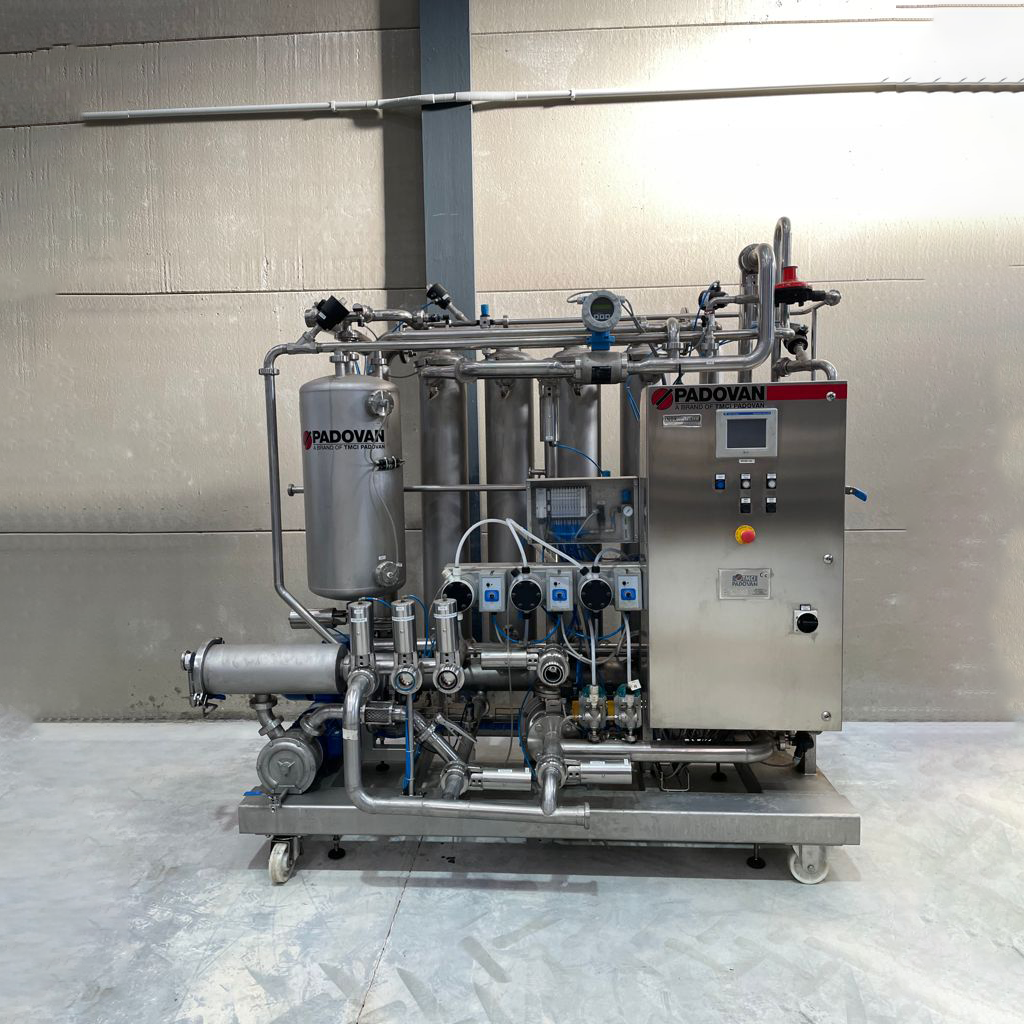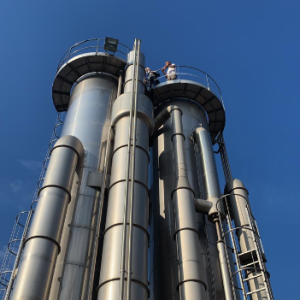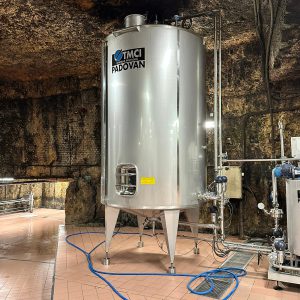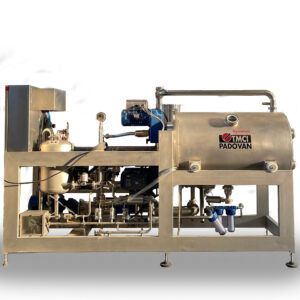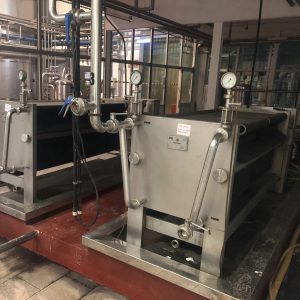Advantages
- extremely compact machine
- oxygen absorption reduced to almost zero
- intelligent” backwash
- fully automatic operation, including backwash
- inverter for feed pump and extraction/backwash
- independent inspection mirrors for each membrane
- independent exclusion valves for each membrane
- automatic capillary integrity diagnosis (bubble point)
- flowmeter – magnetic totaliser
- on-board cip
- Allen Bradley PLC
Technical Data
- Project data
- Filter unit
– 2 opposing centrifugal circulation pumps, 1450 rpm with high flow rate and low head.
– capillary fibre filter modules.
– backwash device with pump for periodic backwashing of the membranes during the filtration cycle.
Filter module
| Configuration | cava |
| Material | PES |
| Inner diameter | mm 1,5 |
| Nominal porosity | µm 0,2 |
| Filter surface area each | m² 20 |
| Wall thickness | mm 0,4 |
| Capillary thickness | mm 2,3 |
The filter is made with product contact parts in AISI 304 stainless steel.
The system is supplied with membranes already activated.
The first test requires a good rinse with water at 45°C followed by neutralisation with 1% acid detergent.
Technical data:
| Filter modules | n. | 4 |
| Filter surface area | m² | 80 |
| Maximum turbidity in feed, approx. | NTU | 600 |
| Occasionally it can bear, approx. | NTU | 1.500 |
Possible traces of carbon and bentonite are only tolerated on the retentate
Scope:
| White wine | Hl/h | 24-80 |
| Red wine | Hl/h | 20-56 |
| Sparkling wine: (***) | ||
| Grape juice | Hl/h | 20-48 |
| Vinegar | Hl/h | 12-24 |
| Total installed power: | kW |
(***)
| Sparkling wine course | Hl/h | 24-80 |
| Operating pressure | bar | 6 |
Required services:
| Nitrogen at 6 bar | Nm³/min | 48 |
The flow rates refer to clarified, decanted and glucan-free products at temperatures above 15 °C. At lower temperatures, the flow rates will decrease by 2.5-3% for each °C less.
Overall dimensions:
| Length | mm | 2.200 |
| Width | mm | 1.000 |
| Height | mm | 1.850 |
| Weight of the empty plant | kg | 850 |
| Weight of the plant being processed | kg | 1.250 |
Operation
Crossflow filtration has in common with traditional filtration the fact that it achieves separation using the membrane as the filter medium and that it has a pressure difference as the guiding force.
The principle of crossflow filtration can be easily described by referring to the picture:
The flow of the liquid (to be filtered) that intercepts the membrane is not perpendicular to the porous septum, but is tangential to it. This fact decreases the formation and accumulation on the inner surface of the membranes of that layer of material capable of clogging the pores, thus making frequent cleaning or even replacement of the filter septum itself necessary.
The product to be filtered is forced under pressure to flow along the membrane surface dragging the retained particles with it.
In this way, the deposition layer (polarisation gel) remains relatively thin and filtration resistance low. This allows a filtration flow rate to be maintained for extended periods of time.
In cross-flow filtration, only a fraction of the fed product passes through the membrane. This fraction is called ‘permeate’ or filtrate.
The remaining feed volume flows along the membrane surface and leaves the filtration module with a higher solids content than when it was introduced into the system. This fraction, called ‘retentate’, is a consequence of tangential filtration.
A reversal of the flow of filtrate circulation (from the outside to the inside of the membrane), known as ‘backwash’ or ‘backflushing’, further controls the deposition of settling material on the membrane surface, which has two effects
- decrease in filtration flow rate;
- formation of a membrane with narrower porosity.
For the above-mentioned reason, it is possible to maintain constant filtration yields over time even with liquids of high turbidity and high clogging power.
Separation by membrane is achieved through the size of the pores (sieve effect).

